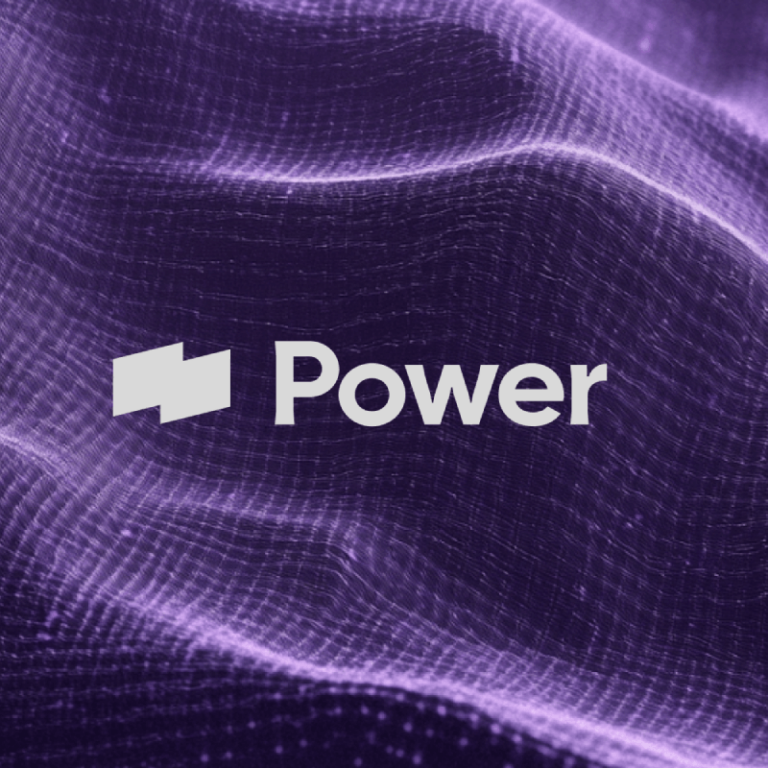10 Costly CPG Marketing Pitfalls and How Growth Brands Avoid Them

- 1. 1. Ignoring the Importance of Omnichannel Marketing
- 2. 2. Underestimating the Power of Consumer Data
- 3. 3. Failing to Build a Strong Brand Identity
- 4. 4. Overlooking the Importance of Product Availability
- 5. 5. Focusing Too Much on Acquisition and Not Enough on Retention
- 6. 6. Not Adapting to Evolving Consumer Preferences
- 7. 7. Neglecting the Power of Digital Marketing
- 8. 8. Assuming Retail Expansion Automatically Drives Growth
- 9. 9. Overlooking the Ramp-Up Period for Off-Site Marketing
- 10. 10. Misaligning Budget Strategies with Seasonal Peaks
- 11. Next Steps
Even the most sophisticated CPG brands leave growth on the table. In a category defined by margin pressure, shifting consumer behavior, and channel fragmentation, it’s not always the bold moves that derail performance—but the avoidable missteps. From misaligned media budgets to brand dilution across retail and digital, small cracks in strategy can compound quickly.
This guide unpacks the most common marketing pitfalls we see across growth-stage and enterprise CPG brands—and the proven strategies leading brands use to sidestep them. Whether you’re optimizing omnichannel investment, driving incremental retail velocity, or protecting profit amid economic headwinds, these are the insights that separate category leaders from the rest.
1. Ignoring the Importance of Omnichannel Marketing
The Pitfall:
Omnichannel isn’t a buzzword—it’s a measurement mandate. If you can’t tie digital spend to in-store lift, you’re playing blindfolded. One of the biggest mistakes a CPG brand can make is focusing too narrowly on one channel—be it retail, eCommerce, or social media. Many brands fail to connect their digital and brick-and-mortar strategies, resulting in inconsistent messaging, lost opportunities, and fragmented consumer experiences.
How to Avoid It:
To thrive in today’s marketplace, an omnichannel approach isn’t just important—it’s essential. Consumers expect a seamless shopping experience across all touchpoints, from browsing on mobile to purchasing in-store.
At Power Digital, we specialize in true omnichannel retail measurement. We take a business-first approach: tying together DTC, Amazon, and brick-and-mortar sales with cross-channel incrementality testing. Our process uses advanced measurement frameworks to assess the real impact of campaigns across every revenue stream, including retail media networks.
Rather than relying solely on in-platform ROAS, we track how Meta, CTV, Amazon DSP, TikTok, and influencer campaigns contribute to in-store and marketplace lift—giving brands a full-funnel view of media effectiveness and allowing smarter budget allocation across both online and offline channels.
Actionable Tip:
Launch geo-lift or store-matchback tests to isolate the in-store impact of your paid media efforts. Leverage Power Digital’s incrementality testing and marketing mix modeling to understand how top-of-funnel awareness channels (like CTV or TikTok) are driving both DTC and retail sales. Use these insights to reallocate spend toward the highest total ROI channels and regions—not just digital clicks.
2. Underestimating the Power of Consumer Data
The Pitfall:
You don’t need more data—you need sharper questions. Most CPG brands are swimming in consumer data but struggle to extract meaningful, revenue-driving signals. The brands that scale profitably are those that translate fragmented insights into precise budget reallocations, LTV-based targeting, and incrementality-based performance frameworks.
How to Avoid It:
Leverage data-driven decision-making at every stage of your marketing campaign. Use advanced analytics to gain deep insights into consumer preferences, buying behaviors, and purchasing patterns. This helps personalize marketing messages, optimize product assortment, and create targeted promotions.
Actionable Tip:
Use incrementality testing to evaluate which audiences and platforms drive net-new revenue—not just attributed conversions. Pair this with predictive LTV modeling to prioritize budget around your most profitable customer cohorts.
3. Failing to Build a Strong Brand Identity
The Pitfall:
Price and product don’t build brands—story does.In a crowded CPG landscape, brand affinity is the true moat. Without a distinctive identity anchored in emotional relevance, you’re just another SKU on the shelf. Top-performing brands consistently connect their values to the values of their consumer—across both paid and owned channels.
How to Avoid It:
Invest time in developing a clear, compelling brand story that resonates with your target audience. Your brand should communicate your values, mission, and personality, setting you apart from competitors. Consumers today seek brands they can trust and connect with emotionally, so it’s important to align your messaging and positioning with their values.
Actionable Tip:
Codify your brand voice and values into a messaging framework that spans retail packaging, PDPs, paid ads, and influencer briefs. Pressure-test this framework through brand lift studies and qualitative consumer panels.
4. Overlooking the Importance of Product Availability
The Pitfall:
Nothing kills a campaign faster than being out of stock or poor product availability. When you drive traffic to retail locations or your eCommerce store and customers can’t find your products, it results in lost sales and frustrated consumers. Worse yet, inventory issues don’t just hurt sales—they can severely damage your relationships with key retailer partners. Brands that fail to fulfill purchase orders (POs) with major retailers like Amazon risk vendor score penalties, expensive chargebacks, and strained partnerships, making it even harder to regain lost momentum.
How to Avoid It:
Ensure your supply chain is strong and that inventory management systems are up to date. Use real-time inventory tracking to ensure products are available where and when customers want to buy them. At Power Digital, we work with brands to incorporate inventory considerations directly into scenario planning and media forecasting. By modeling multiple revenue and supply scenarios, we help brands understand how aggressive media allocations could deplete inventory faster—and proactively adjust media strategies to avoid costly out-of-stock situations.
Actionable Tip:
Work with partners that not only provide real-time inventory updates but also help you build dynamic scenario plans that connect media strategy to inventory flow. Launch proactive forecasting exercises that model how different levels of media investment will impact sell-through rates. Automatically pause or scale media in geographies where inventory is running low to protect ROAS, retailer relationships, and customer experience.
5. Focusing Too Much on Acquisition and Not Enough on Retention
The Pitfall:
While it’s important to acquire new customers, retention is often the key to long-term growth. Brands that focus too much on acquisition and neglect building loyalty can see their customer base shrink over time. In today’s environment of rising costs, especially with pending tariffs and increased fees on platforms like Amazon, retention isn’t just about growth—it’s about protecting margins. Higher lifetime value (LTV) customers give brands more flexibility to absorb cost pressures without having to constantly raise prices or slash media budgets.
How to Avoid It:
Invest in customer retention strategies that focus on engagement, personalization, and loyalty. Encourage repeat purchases by providing value through personalized offers, loyalty programs, and customer-centric messaging.
At Power Digital, we emphasize that boosting LTV is one of the most effective defenses against shrinking margins. By nurturing deeper relationships with your best customers, brands can create a healthier revenue mix, reduce dependency on constant acquisition, and better withstand external economic pressures like tariffs. Remember: it’s often cheaper—and more profitable—to retain an existing customer than to acquire a new one.
Actionable Tip:
Use churn scoring models to identify at-risk customers and trigger replenishment or loyalty offers preemptively. Layer in post-purchase strategies that encourage bundling, upsells, and exploration of high-margin SKUs to extend customer value faster. Focus especially on creating retention journeys for your highest-LTV cohorts to maximize profitability and future-proof your revenue.
6. Not Adapting to Evolving Consumer Preferences
The Pitfall:
Consumer preferences don’t shift—they compound. Today’s consumer isn’t just shopping—they’re value signaling. Brands that fail to innovate around wellness, sustainability, and inclusivity will lose relevance not over years, but within quarters. The shift towards healthier, more sustainable, and ethically sourced products is a prime example. Ignoring these trends or failing to innovate can leave brands behind.
How to Avoid It:
Stay agile and keep a close eye on consumer trends. Regularly conduct market research to understand evolving preferences, and be ready to pivot when needed. Whether it’s shifting to more sustainable packaging, adjusting your product mix, or incorporating new technologies, innovation is crucial for staying relevant.
Actionable Tip:
Combine search trend analysis, social listening, and SKU-level sales data to detect emerging consumer signals. Use these insights to run low-risk pilots (e.g., new flavor drop, sustainable packaging, limited-edition SKU) and measure real-time adoption.
7. Neglecting the Power of Digital Marketing
The Pitfall:
Many CPG brands still rely heavily on traditional retail and TV advertising, overlooking the potential of digital marketing to reach their target audiences. In today’s world, digital channels like social media, paid search, and influencer marketing are integral to success.
How to Avoid It:
Embrace digital marketing strategies that complement your offline efforts. With digital, you can test, learn, and optimize in real-time. Social media platforms and influencer partnerships offer unique ways to engage with customers authentically, while paid media allows for precise targeting and measurement.
At the same time, be strategic about where and how you invest in search ads—especially when competing with retail partners.
Brands should evaluate whether it’s worth competing with retailers in search ads to maintain more real estate within the SERP. If the ultimate goal is for consumers to purchase through retailers, it may be more effective to reallocate those dollars to other marketing channels—allowing retailers, who often have larger advertising budgets, to capture the demand driven by the brand’s broader marketing efforts.
Actionable Tip:
Build a digital media strategy that maps upper-funnel content (YouTube, TikTok, Meta Reels) to lower-funnel conversion paths like Amazon or retail search. Use micro-influencers for high-frequency creative testing, and prioritize platforms with full-funnel attribution insights.
8. Assuming Retail Expansion Automatically Drives Growth
The Pitfall:
Expanding into more retail doors may seem like a guaranteed growth strategy, but it doesn’t always translate to incremental revenue. Without the right support and demand generation, retail expansion can cannibalize existing sales rather than grow the overall pie.
How to Avoid It:
Support retail expansion with demand creation strategies—such as digital advertising, influencer partnerships, and omnichannel campaigns—to build awareness and drive trial. It’s also essential to measure performance across channels to ensure growth is additive, not duplicative.
Actionable Tip:
When entering new retailers, run A/B regional holdout tests to evaluate true incrementality. Layer geo-lift and digital activation data with retailer velocity data to determine if new doors are additive—or just shifting volume.
9. Overlooking the Ramp-Up Period for Off-Site Marketing
The Pitfall:
You wouldn’t expect to run a marathon without training—don’t expect CTV or Meta to perform without building signal strength. Brands that haven’t historically invested in digital media often expect instant results once campaigns launch. However, new campaigns—especially on Meta or CTV—require time to ramp up, optimize, and gain traction. Starting too aggressively or judging performance too early can lead to poor decisions.
How to Avoid It:
Recognize that off-site marketing requires a build-up period. Plan for gradual spending increases and give algorithms time to optimize performance before pulling the plug.
Actionable Tip:
Plan a 4–6 week ramp period for new campaigns on platforms like Meta or CTV. Delay major optimizations until after 2–3 learning cycles and monitor audience saturation, creative fatigue, and cost per incremental reach weekly.
10. Misaligning Budget Strategies with Seasonal Peaks
The Pitfall:
Too many brands over-index on Q4 without accounting for category-specific demand curves. The winners map their media investments to their actual sales velocity windows—and dominate their niche before competitors even realize they missed the moment.
How to Avoid It:
Base your media planning on your brand’s unique demand curve, not generic seasonality. Failing to spend during peak windows can result in missed revenue and market share losses.
Actionable Tip:
Run media mix modeling to identify your category-specific demand curve. Shift Q4-centric budgeting to a 52-week investment strategy, prioritizing spend 30–45 days before peak sales windows to capture early-stage interest and intent.
Next Steps
Avoiding these common CPG marketing pitfalls requires a holistic, data-driven approach that integrates both digital and physical retail strategies. By understanding consumer behavior, leveraging omnichannel capabilities, focusing on brand identity, and continuously adapting to market changes, you’ll be better equipped to drive growth, build loyalty, and ultimately increase profitability.
Need help optimizing your CPG marketing strategy? Power Digital’s experts specialize in helping CPG brands drive growth through data-driven, omnichannel strategies. Let’s talk!
Our Editorial Standards
Reviewed for Accuracy
Every piece is fact-checked for precision.
Up-to-Date Research
We reflect the latest trends and insights.
Credible References
Backed by trusted industry sources.
Actionable & Insight-Driven
Strategic takeaways for real results.

















